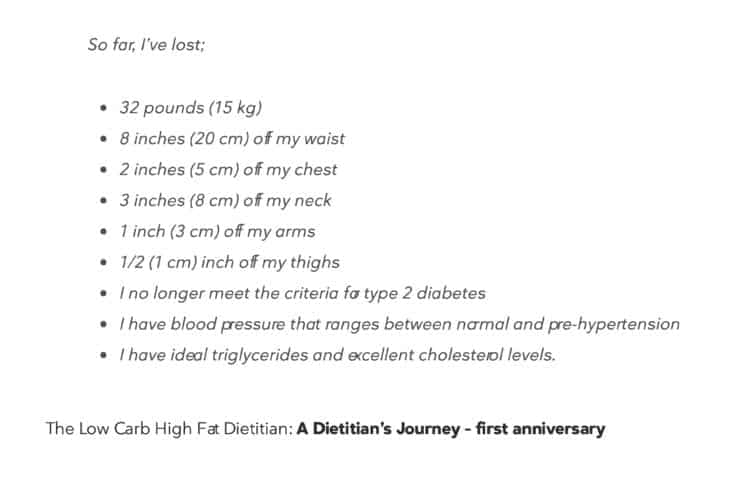Why on earth would a Dietitian suggest to avoid making New Year’s resolutions to lose weight, exercise more or eat healthier? The reason is that research indicates that half of those that make these types of health-related New Year’s Resolutions give up just a week into the new year [1] and by the end of January, 83% will have given up [1]. A New Year’s resolution will see only 8% of people reach their goal, with 92% failing[1]. I want people succeed and since it takes approximately 66 days (that’s more than 2 months!) to create a new habit[2] having my support during the critical planning and implementing stage can make a huge difference!
Rather than making a New Year’s resolution, I recommend that people set SMART goals. Ideally if they want to lose weight during the new year, they will have done this in November and begun to implement their plan in December but it’s not too late! Setting SMART goals in January and beginning to implement them in February works great!
What are “SMART” goals?
SMART is an acronym for goals that are specific, measurable, achievable, relevant and time-bound.
Goals that are Specific
When setting a goal, it needs to be specific.
If your goal is weight loss, then think about exactly what you are trying to accomplish in terms of how much weight in what amount of time.
If your goal is to exercise more, than decide how often you will exercise, for how long at each session , and what types of exercise you will do (weights, resistance, cardio, etc).
If your goal is to eat healthier, then define what that means to you. Is it “clean eating”; then what is that, exactly? If you want to eat to lower your blood sugar or cholesterol or blood pressure or to reduce your risk to specific diseases that run in your family, then you need to define it that way.
Goals that are measurable
When setting a goal it is necessary to define what is going to be used to measure whether the goal will have been met. If the goal is weight loss, then it can be measured by a certain number of pounds or kilos lost or by a specific waist to height ratio.
If the goal is to exercise more, then it can be measured in times per week at the gym, the number of hours spent exercising each week or how many fitness classes you attend each month.
If the goal is to eat healthier, then how are you going to measure that? It could be measured in how many times you eat fatty fish (like salmon or mackerel) in a week, or how many grams of carbohydrate you eat per day or how many servings of leafy green vegetables you eat per day. How will you measure it?
What does success look like?
Goals that are achievable
For goals to be successfully accomplished, they need to be realistically achievable from the beginning, otherwise people get discouraged and give up.
When it comes to setting weight loss goals, it is not uncommon for people to decide they want to lose 20 pounds in a month before a special social function, but is it achievable?
When it comes to exercising more, is it achievable to set a goal of working out an hour a day, 7 days per week or is there a different goal that is more likely to be achievable, but will still keep you progressing?
It’s the same with eating healthier; the goal needs to be achievable. When I started my personal weight loss and health-recovery journey in March 2017, one of the goals I set was to put my Type 2 Diabetes into remission by a year. Based on the research and how I decided to eat, that was achievable. It actuality it took me 13 months to accomplish, but I was not discouraged that I didn’t actually achieve it in the time frame I planned because the goal was achievable. I was close at a year, just not “there” yet.
Goals that are relevant or realistic
For a goal to be relevant, it needs to fit within a person’s broader goals.
If I have a goal to lose weight but I have a larger goal to eat with my kids, then I need to plan to make food for myself that is the same as what I make for them, with some modifications for my weight loss goals
If one of my goals is to spend more time with my kids in the evening then planning to go running each evening as a way of exercising more does not fit within my broader goals. If my goal is to buy only locally-sourced food and I want to eat mangoes as part of my plan to eat healthier, I will face challenges if I live in the northern US or Canada and it’s wintertime. We need to know our broader goals and set our individual ones in that context.
For a goal to be realistic it needs to be achievable and for this step, it is often best to consult someone that would know.
Goals that are time-bound
Setting a goal to “lose weight” is one thing. That’s pretty generic. Setting a goal to lose a given amount of weight in a specific amount of time means that a lot of planning and implementing needs to occur for that goal to be successfully realized. It is the planning and implementing to achieve a specific, measurable, achievable and realistic goal in a specific time-frame that makes it successful.
A Dietitian’s Journey – SMART Goals
Back in March 2017 when I set out to restore my own health and lose weight, these were the goals that I set;
(1) blood sugar in the non-diabetic range
(2) normal blood pressure
(3) normal / ideal cholesterol levels
(4) a waist circumference in the ”at or below” recommended values of the Heart and Stroke Foundation
While they don’t appear as SMART goals, as a Dietitian I knew what the “normal range” for these was and the time-frame I set was one year.
At the one year mark, my progress report as posted on Diet Doctor on March 14, 2018:

I did reach my goal of having my waist circumference at or below the recommended values of the Heart and Stroke Foundation, but still had a way to go to get it in a healthier range based on waist to height ratio;
I have not yet reached a low-risk waist circumference (one where my waist circumference is half my height). I still have to lose another 3 inches to lose (having already lost 8 inches!), so however many pounds I need to lose to get there, is how much longer I have to go.
I am guessing that will be in about 20-25 pounds which may take another 6 months or so, but I’m not really concerned about the time because this ”journey” is about me getting healthy and lowering my risk factors for heart attack and stroke, and any amount of time it takes is what it will take.
It took years to make myself that metabolically unhealthy and it will take time for me to get to a healthy body weight and become as metabolically well’ as possible.
(from “A Dietitian’s Journey”)
As it turned out, it was only a week ago last Monday that I finally got to a place where my waist circumference was half my height; 8 months after my first year update. That was 2 months more than I thought it would take, but only 20 pounds more that I needed to lose to accomplish it, so I was close.
Was I discouraged at 6 months when I hadn’t “arrived”?
No, because from the beginning my goals were SMART, which made them rooted in what was possible.
I was very specific as to what I wanted to accomplish, how I was going to measure success, that the goals were achievable based on the available research, were relevant to my larger life goals and were time-bound. That said, just because reaching my goals was possible did not guarantee that I would achieve all of them in the time I planned. I achieved most of them within a year, and achieved the rest with a little more patience and time.
Some final thoughts…
Instead of setting a New Year’s resolution to lose weight, exercise more or eat healthier, perhaps spend the month of January setting very specific SMART goals. At the end of January, when 83% of the people have already given up on their New Year’s resolutions to improve their health, you will about to implement your well-thought out, realistic plan and may have already engaged me, as a Dietitian or a personalized trainer to help you implement it. Now THAT is a whole lot more than wishful thinking!
- “What specifically do I want to accomplish”
- “How will I measure success?”
- Is this achievable? Do I know? Where can I find out?
- Is this goal relevant to my larger life goals?
- What time-frame do I want to accomplish this by?
Write out what you can about each of your goal(s) and then if achieving your goal will take more than a few months or a year or more to achieve, then I’d recommend engaging a professional to support you.
When it comes to weight loss and eating healthier I can certainly help, and if your goal is to lower risk to specific types of diseases I can certainly share with you the information I have gleaned as to which types of exercise are the most helpful in that regard.
If you want to consult with me to help you set SMART goals, please click here to learn more or send me a note using the Contact Me form located on the tab above. I provide in-person services in my Coquitlam (British Columbia) office or via Distance Consultation (Skype, phone) so whether you live close or far away, I’m happy to help.
If you would like more information about my hourly services or the packages I offer, please click on the Services tab above and if you have questions about those, please send me a note using the Contact Me form and I’ll reply when I am able.
Wishing you the very best for a healthy and happy New Year!
Learn about me here.
To your good health!
Joy
You can follow me on:
Twitter: https://twitter.com/jyerdile
Facebook: https://www.facebook.com/BetterByDesignNutrition/
Copyright ©2018 BetterByDesign Nutrition Ltd.
LEGAL NOTICE: The contents of this blog, including text, images and cited statistics as well as all other material contained here (the ”content”) are for information purposes only. The content is not intended to be a substitute for professional advice, medical diagnosis and/or treatment and is not suitable for self-administration without the knowledge of your physician and regular monitoring by your physician. Do not disregard medical advice and always consult your physician with any questions you may have regarding a medical condition or before implementing anything you have read or heard in our content.
References
- Norcross, JC et al, Auld lang syne: success predictors, change processes, and self-reported outcomes of New Year’s resolvers and nonresolvers. J Clin Psychol. 2002 Apr;58(4):397-405
- Lally, P., van Jaarsveld, C. H. M., Potts, H. W. W. and Wardle, J. (2010), How are habits formed: Modelling habit formation in the real world. Eur. J. Soc. Psychol., 40: 998—1009.

Joy is a Registered Dietitian Nutritionist and owner of BetterByDesign Nutrition Ltd. She has a postgraduate degree in Human Nutrition, is a published mental health nutrition researcher, and has been supporting clients’ needs since 2008. Joy is licensed in BC, Alberta, and Ontario, and her areas of expertise range from routine health, chronic disease management, and digestive health to therapeutic diets. Joy is passionate about helping people feel better and believes that Nutrition is BetterByDesign©.
